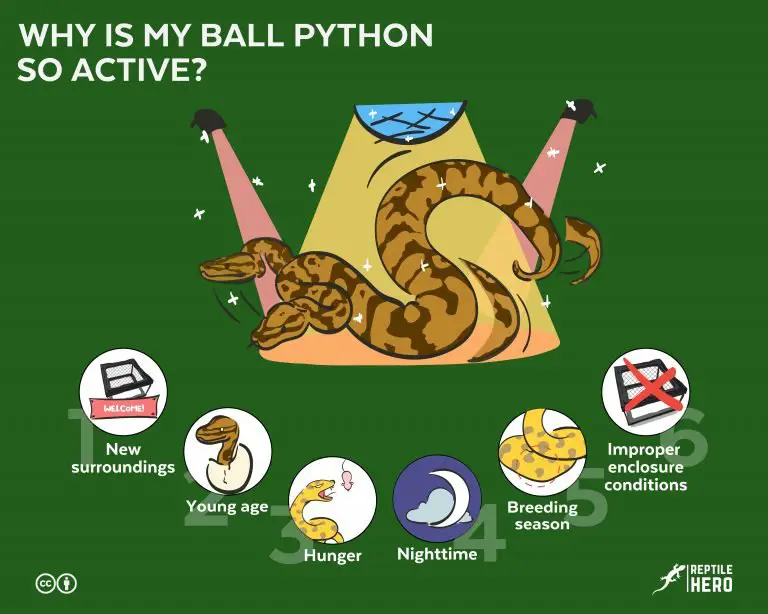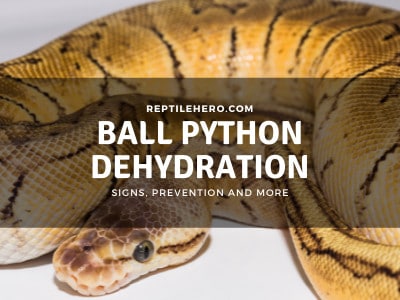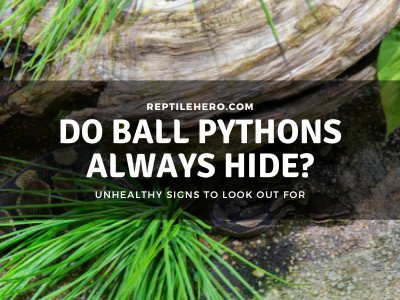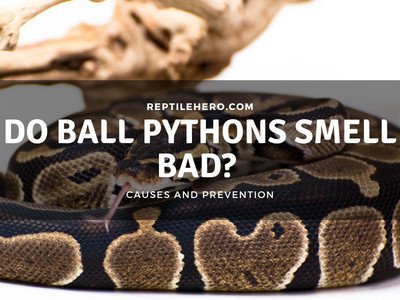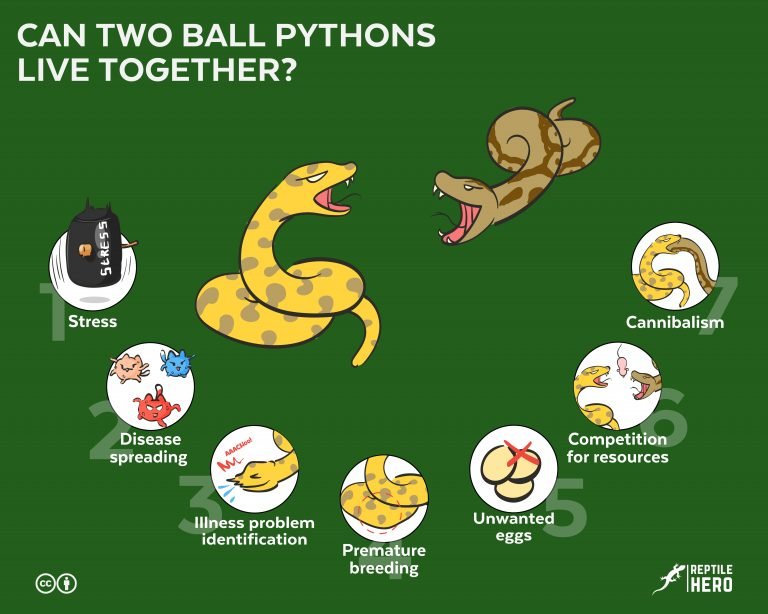10 Stunning Black Snakes You Can Keep as Pets (With Photos)
Are you wondering if there are black snakes you can keep as pets? If so, which is the right one for you? No matter the color, the snake’s health and well-being are still the priority when keeping one as a pet.
The 10 best snakes to keep as pets are the 1) Mexican black kingsnake, 2) black African house snake, 3) suma ball python, 4) black rat snake, 5) black milk snake, 6) IMG boa constrictor, 7) motley golden child reticulated python, 8) black Russian sand boa, 9) black pine snake, and 10) eastern indigo snake.
Black snakes are often morphs of some species like pythons and kingsnakes. How much are these black pet snakes? What do they look like and what makes them great? Find out more about these snakes and more as you read!
1. Mexican Black Kingsnake
Mexican black kingsnakes are heavy-bodied black snakes that can grow 4–5 feet in length. They are beautiful, hardy, robust, good eaters, and active snakes.
If you want an almost jet-black snake from a hatchling to an adult, I recommend Mexican black kingsnakes because they are entirely black besides their blueish-gray underbelly.
Even though Mexican black kingsnakes are often docile and easy to handle, they are known to bite their owners as a feeding response.
>>Learn the different types of pet snake bites in our article about why your ball python bit you.
But don’t worry as they don’t have a venomous bite. Most keepers have even stated that the bite itself is only shocking, not at all painful.
If you want to buy one, expect a price range of 200 dollars for hatchlings. However, this can go upwards of 600 dollars for adults.
Pro Tip: If you are planning to get a Mexican black king, I recommend searching for captive-bred babies around May-August which are their common hatching months.
2. Black African House Snake
Black African house snakes have a dark brown to black coloration with a white or grey underbelly. They are relatively small snakes that can grow around 2–4 feet.
Another interesting feature about African house snakes is their large, buggy eyes which is a very cute feature befitting a small snake.
Black African house snakes are also non-venomous and very docile. One keeper even shared that they are intuitive and comparable in behavior to bigger snakes like reticulated pythons.
Even if they are slightly uncommon in the US and the UK, they are relatively cheap—with wild-caught ones costing around 50 dollars. For a captive-bred one, expect a price range of about 100–200 dollars.
I recommend buying a captive-bred one to have a higher chance of getting a healthy and parasite-free snake!
3. Suma Ball Python
The suma morph is one of the darkest morphs for ball pythons. However, each individual has variating colors like jet black, grey, copper, and bronze while some have a distinctive line on the dorsal spine.
Also known as super mahogany, suma ball pythons are the result of breeding together two mahogany ball pythons.
Some will start out as black snakes but grow to have a bronze-like hue and vice-versa. So you will never know what your baby suma ball python will look like as an adult.
If you want a jet-black ball python I suggest buying an adult suma morph that has grown to be the shade of black that you prefer.
The only problem with suma ball pythons is their price which is around 700–1,200 dollars, with solid black ones being more expensive.
4. Black Rat Snake
Black rat snakes, also known as eastern rat snakes, have a solid black coloration with hints of white on their chin and underbelly. They are heavy-bodied snakes and can grow up to 4–6 feet long.
In some cases, black rat snakes might have white speckles all over its body which will vary from each specimen.
Black rat snakes are one of the most common snakes in the eastern part of North America. So if you live in these parts, you might see one roaming about in your yard or even house!
They are also non-venomous snakes that have a docile temperament. Keepers and even residents who encounter black rat snakes are surprised that they are not prone to bite in defense.
If they feel threatened, they can release a foul-smelling fluid and rub it on you. This is called musking which is harmless but super gross!
Captive-bred eastern rat snakes can cost around 75–150 dollars, with hatchlings commonly cheaper than adults.
5. Black Milk Snake
Milk snakes have a variety with an overall black coloration and slight visibility of red stripes. Their darkness varies, with some specimens growing to almost full-black adults.
The black morph of milk snakes is quite rare especially darker ones. Most specimens of this morph only look like a faded or slightly darkened version of the common morph.
Milk snakes are species of kingsnakes and are greatly similar to the Mexican black kingsnake in terms of habitat and size.
For the cost, I’ve seen black milk snakes with prices of around 400–600 dollars. However, this is only based on the few listings I saw online so it might be higher than estimated.
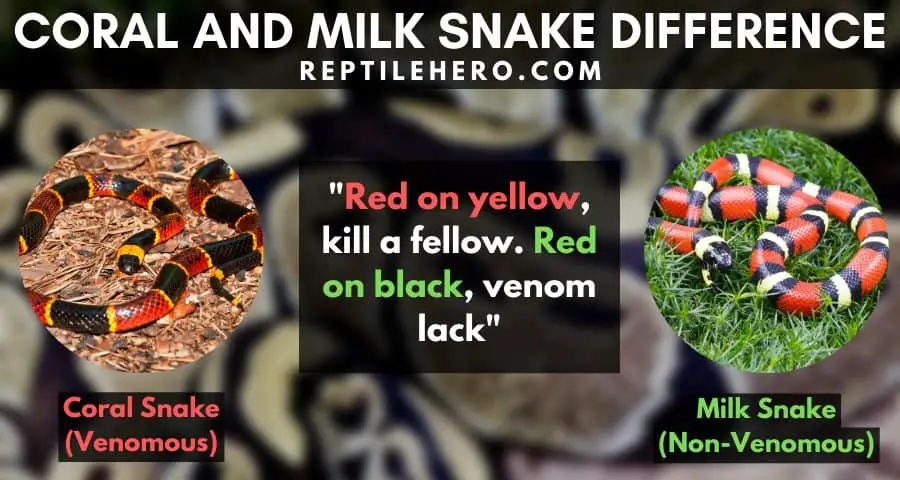
The common milk snake looks similar to the highly venomous coral snake. So I recommend memorizing the rhyme above in case you encounter a red/black striped snake in the wild.
6. IMG Boa Constrictor
IMG boas are variations of the common boa constrictors that darken in color as the snake grows. Adult IMG specimens differ in color, with some becoming fully jet-black while others will have darkened colors and faded patterns.
For IMG boas, the abbreviation stands for “Increasing Melanin Gene”. Melanin is the cause of the black pigmentation in a snake [2].
Another cool feature of an IMG boa is its eyes which will match the color of the scales. So if you’ve seen a full-black boa, you can see its matching dark eyes that look like teddy bear eyes.
With all these awesome dark colorations, IMG boas are regarded as the “Lamborghinis” of the boa constrictor morphs and can also grow around 10–13 feet long!
A simple IMG morph can start at 1,000 dollars while a full jet-black one will be around 3–4 grand. If you add a couple more genes to it, you will be looking at a snake that can cost around 5 figures!
7. Motley Golden Child Reticulated Python
The motley golden child or the MGC is a reticulated python color morph that has a dark body with a bronze or gold head. There are also some variants with the same dark body but have a close-to-black head coloration.
When a motley and golden child reticulated python morph is combined, an MGC will be the resulting offspring.
You can see how reduced the patterns are in the body of the snake itself. The head will sometimes have a few markings but still minimal.
The snake’s underbelly is either grey or white in color. When you take it out in the sun its dark scales will reflect and shine the colors of the rainbow.
This highly iridescent reticulated python morph can easily grow as long as 10–20 ft! So this is not a snake intended for beginners due to its enormous size.
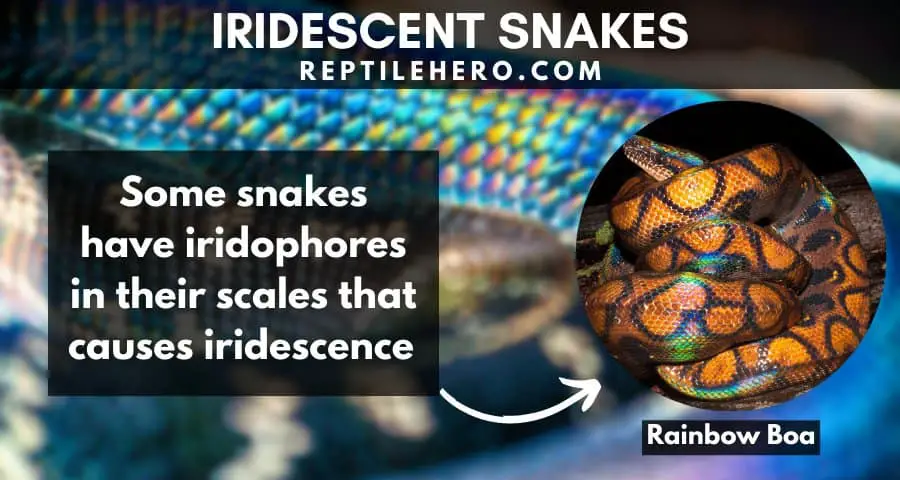
A hatchling will cost around 300–500 dollars. If there is an additional gene, the price can skyrocket to a few thousand bucks!
8. Black Russian Sand Boa
Black Russian sand boas will sometimes have dark pigmentation with sides and underbelly speckled with white, grey, or brown. The super black version is almost a full-black snake with minimal light speckles.
They are non-venomous snakes and can reach lengths of around 3–4 feet. However, they’re also very docile and handleable.
Even with impressive colors and temperaments, there is one drawback in keeping sand boas: you will rarely see them out in the enclosure.
They are a burrowing species that will bury themselves in the sand almost all the time.
Like some of the black snake morphs in our list, black Russian sand boas will cost significantly more than normal ones.
Common Kenyan sand boas cost around 100–300 dollars but the black Russian variant will cost you upwards of a thousand bucks!
9. Black Pine Snake
Black pine snakes are large fully black or dark brown snakes that sometimes have a few white speckles. They also have distinct keeled scales and can grow around 4–5 feet in length.
Aside from their great features, black pine snakes are also hardy and non-venomous. Some keepers share that their pine snakes are a bit feisty but got tolerant of being handled after a bit of effort.
The biggest drawback in keeping them will be the legality of acquiring one due to being a threatened species [3].
In other words, you can only acquire black pine snakes through a breeder in their endemic states like Alabama. To transport it to another state, you must acquire an inter-transport permit through the US Fish and Wildlife Service.
>>Learn more about selling snakes in our article on where to sell ball pythons.
For costs, expect to pay around 400–800 dollars for one black pine snake plus 100–200 dollars for the legal permits.
10. Eastern Indigo Snake
The eastern indigo snake has a black coloration that shines with iridescent blue hues in the sunlight. They also have varying intensities of red to orange colors on their face, chins, and necks.
Eastern indigo snakes can grow more or less 6 feet for females and 7 feet for males. They are moderately-bodied snakes that are very docile and handleable.
Some keepers even regard them as one of the most intelligent non-venomous snakes in the world. They are very active and super intuitive when it comes to interaction.
With these awesome characteristics, it is sad to say that you probably won’t get an eastern indigo snake because they are a threatened species. Simply put, you’d have to go through various legal steps to acquire one [4].
Like the black pine snake, eastern indigos also need special permits for interstate transportation. A keeper even shared that his permit only got approved after 1–2 years!
If you do get one, a hatchling can cost a minimum of 1,000 dollars. This price will vary and can even go over 5,000 dollars.
What Makes a Great Pet Snake?
In most cases, great pet snakes are largely dependent on the capacity and preference of the keeper. A good pet snake for one might be a bad choice for another pet owner.
For example, as a beginner in the past, I knew the right snake for me was a ball python because they are easy to take care of and I personally like them.
I knew at that time that my capacity as a keeper was greatly limited so I can only handle a beginner-level pet.
However, I knew a few people who had Burmese pythons as their first pet snakes. They knew that they have the capacity, like the time and finances, to handle such big snakes.
A snake’s potential as a pet can also be dependent on the personal preference of a keeper.
Do you want a big snake? You can go for a Burmese or even a reticulated python. Too big? A ball python or corn snake might fit your preference.
Interesting Cultural Symbolisms of Black Snakes!
In some cultures, black snakes are symbolisms of health and vitality. While some regard these creatures as bad luck or a sign of betrayal.
Dark-colored snakes like rat snakes or even cobras are often mixed in with wine in countries like China and Vietnam. This drink is called snake wine.
They believe that this concoction can bring vitality. They also thought that it can cure illnesses and even hair loss. Even if these claims have no scientific backing, it remains a staple tradition, especially in rural areas.
Some spiritual people also believe that seeing black snakes in real life or in your dreams can mean harm or bad luck for you.
For example, they say that if you dreamt about a black snake inside your body, it is a sign of relationship problems—either romantic or platonic.
Conversely, they say that if you see a dead black snake, something good will happen to you.
Further Questions
Can a snake eat itself?
A snake can eat itself due to extreme stress. It can even kill itself due to the digestive juices dissolving its tissues. Snakes like kingsnakes and rat snakes are known to eat themselves when stressed in captivity.
Besides humans, what causes some snakes to become endangered?
In addition to humans, a snake can become endangered due to a low reproduction rate caused by either small clutches of eggs or a slow growth rate to reach maturity. These reasons are evident in black pine snakes and eastern indigos.
Summary of the 10 Best Pet Black Snakes as Pets
For black snakes, the following can be kept as pets: Mexican black kingsnake, black African house snake, suma ball python, black rat snake, black milk snake, IMG boa constrictor, motley golden child reticulated python, black Russian sand boa, black pine snake, and eastern indigo snake.
A great pet snake is mainly determined by the capacity of the owner to take care of the animal. It is also dependent on the personal preference of individual keepers.
In some cultures, black snakes are a symbol of health and long life which is evident in their use. This includes making snake wines for medication. Others, however, believe that the presence of live black snakes is a sign of bad luck while a dead black snake represents good luck.
Sources
[2] https://www.jstor.org/stable/1563357
[3] https://forestry.alabama.gov/Pages/Informational/Endangered/Black_Pine_Snake.pdf

